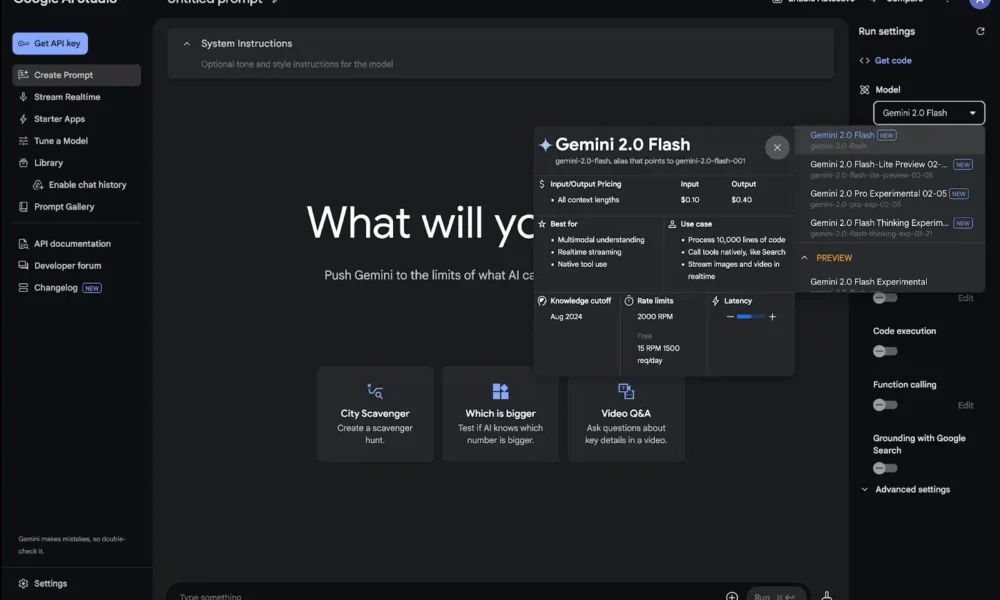Is GPT-5 the Unified AI Model We Expected?
Last week, OpenAI unveiled GPT-5, aiming to enhance the ChatGPT experience. The goal was to create a versatile AI model that would streamline user interactions by automatically curating the best responses. OpenAI hoped this approach would eliminate the cumbersome model selection process — a feature that CEO Sam Altman has criticized.
Reality Check: GPT-5 Falls Short of Expectations
Despite the initial excitement, GPT-5 has not fully lived up to its promise as a single, unified AI model.
New Features and User-Centric Options Introduced
On Tuesday, Altman shared in a post on X that users can now select between “Auto,” “Fast,” and “Thinking” modes on GPT-5. The Auto setting aims to function as the promised model router, while the Fast and Thinking options provide direct access to various response styles.
Legacy Models Make a Comeback
Along with the new modes in GPT-5, Altman announced that paid subscribers can again access several older models, including GPT-4o, GPT-4.1, and o3, which had been phased out just a week prior. GPT-4o is now set as the default in the model picker, while users can add other models through ChatGPT’s settings.
Future Improvements and User Customization
Altman mentioned on X that OpenAI is working on enhancing GPT-5’s personality to feel friendlier while avoiding the more polarizing aspects of GPT-4o. He acknowledged the need for improved user customization options regarding AI model personalities.

Complexity Persists in ChatGPT’s Model Picker
Despite the introduction of GPT-5, ChatGPT’s model picker remains intricate, suggesting that the anticipated simplicity from GPT-5’s router has not materialized. Users had high hopes for GPT-5 to reach new heights like its predecessor, GPT-4, but the rollout has proven to be less than seamless.
User Backlash and Response from OpenAI
The removal of GPT-4o and other models led to a significant backlash from users who were attached to their distinct responses. Altman has promised to notify users well in advance before any future model deprecations.
Performance Issues and Team Iteration
Upon its launch, GPT-5’s model router experienced significant problems, contributing to perceptions of reduced performance compared to prior models. Altman addressed these concerns in a Reddit AMA. Despite challenges, OpenAI’s VP of ChatGPT, Nick Turley, emphasized the team’s commitment to rapid improvement.
Understanding User Preferences in AI Models
Routing prompts effectively requires aligning an AI model not just with user preferences but also specific inquiries. Some users might prioritize fast responses, while others value a more verbose style or unique perspectives.
The Emotional Connection to AI Models
The attachment users form with AI models is a newly emerging phenomenon, illustrating the complex relationships people can have with technology. For example, hundreds in San Francisco recently held a symbolic funeral for Anthropic’s Claude 3.5 Sonnet AI when it was retired. This illustrates the depth of interaction users have with AI, sometimes leading to fragile mental states.
OpenAI’s Path Forward
Moving forward, OpenAI recognizes the urgent need to better align AI models with individual user preferences. The journey toward achieving a truly intuitive AI experience continues.
Here are five FAQs regarding the ChatGPT’s model picker feature:
1. What is the model picker in ChatGPT?
Answer: The model picker allows users to select from multiple AI models, each optimized for different tasks and applications. This feature gives users the flexibility to choose the model that best meets their needs for generating text, answering questions, or engaging in conversation.
2. How do I choose a model using the picker?
Answer: To choose a model, simply click on the model picker interface where you’ll see a list of available models. You can review a brief description of each model’s capabilities and select the one that aligns with your requirements by clicking on it.
3. Are all models available to all users?
Answer: Not necessarily. The availability of models may depend on your subscription tier or user status. Some advanced models might be limited to premium users, while basic models are generally available to all.
4. What factors should I consider when selecting a model?
Answer: Consider the complexity of the task, response time, and the type of content you need. For example, some models may excel in creative writing, while others perform better in technical explanations or casual conversation.
5. Can I switch models during a session?
Answer: Yes, you can switch models at any time during your session. However, keep in mind that switching models may affect the context and coherence of the conversation, as each model may interpret prompts differently.










